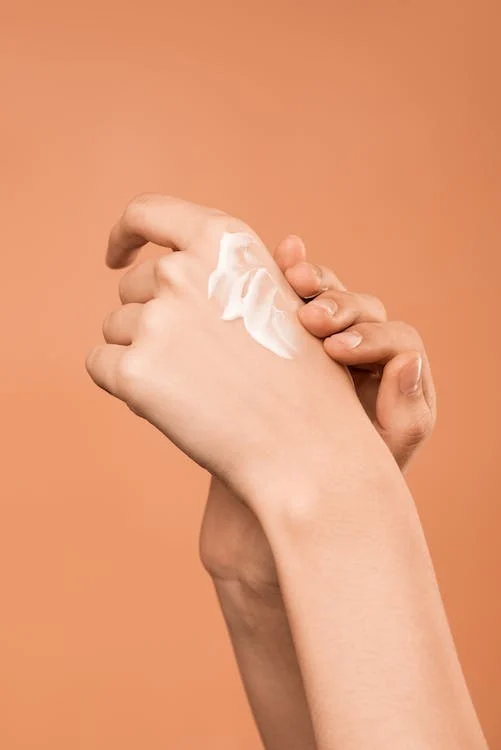In the realm of beauty, there is one certainty: our diverse skin care requirements and preferences. What works for one skin type may have the opposite effect on another, so it’s important to experiment to find out what works best for your skin.
Depending on your skin type, your moisturizer’s texture should be chosen with care. When there are several options for lotion textures to consider, making a decision might be difficult.
When shopping for a skin moisturizer or treatment, there are four primary categories of products to consider: ointments, creams lotions and gels. Different water-to-oil ratios give these substances distinct textures, which might have an impact on the product’s intended function.
Depending on the skin issue you wish to treat, you may choose an ointment, cream, lotion, or gel. For all of your skin care needs, you might not want to use the same product. Also, your skin type is an important thing to think about because some of these items are thicker than others.
How Are Ointment, Cream, Lotion, And Gel Different?
When shopping for a skin moisturizer or treatment, there are four primary categories of products to consider:
- Ointment. Ointments have the highest oil content of any skin care product. They don’t immediately sink into your skin; instead, they remain on top of it, providing more defense against moisture loss and environmental factors like cold or dry air. Mineral oil and petroleum are often used as components in ointments.
Antibiotics and other topical treatments for skin infections are often available in ointment form. They stay on your skin’s surface for a longer time, which helps make sure that your skin absorbs as much product as possible. Moisturizers in ointment form may also assist very dry skin for the same reason.
- Cream. The main distinction between cream and lotion is that creams are often thicker and richer and contain less water. They are useful for treating dry skin types or fissures, as well as rashes, since they create a physical barrier on the skin, cover vast regions of the skin, and assist to seal in the moisture. Creams can be slightly oily.
- Lotions. There is a common misconception that creams and lotions are same. Compared to creams, lotions contain more water and are often lighter in weight and less oily. They are also considerably thinner than cream-based treatments and leave very little residue. Lotions may leave the skin feeling nourished and smooth while also addressing issues like wrinkles, uneven skin tone, and other symptoms of aging. In dry conditions or throughout the winter, lotions are an excellent option for everyday use and make an excellent choice for skin types ranging from normal to oily.
- Gels. Gel-based solutions are water-based and typically oil-free, making them one of the finest alternatives for those with oily skin. They are also thinner in consistency than creams and lotions, and they do not leave a film or greasy sensation on the skin. Gels soak swiftly into the skin, leaving little to no residue behind, give significant hydration. Gel-based solutions may also help those with sensitive, acne-prone skin.
If the words oily or acne-prone come to mind when you consider your skin, you should incorporate a lightweight gel composition into your skin care regimen. A gel formula, which provides oil-free hydration, may be useful in warmer months, particularly for combination skin types.
What Is Gel Lotion?
Gel lotion refers to any gelatinized product created with precisely designed components that is administered topically to the skin for a variety of reasons. A gel lotion, in contrast to liquid lotions, has a tendency to coagulate and solidify and won’t become runny.
Types of Gel Lotions
When it comes to providing first aid, several different kinds of gel lotions are used. Some may include anti-inflammatory chemicals such topical cortisone for treating bug bites, rashes, and burns. Aloe and other gel-based lotions aid in the healing of minor burns, wounds, scratches, and other skin irritations.
In face skin care and gel lotion soaps, several gel lotions are utilized. These could include moisturizers or astringents.
Some gel lotions include germ-killing chemicals for hand sanitizing. These antibacterial gels may be found in a portable size to fit into a handbag or bag and are often used when traveling. The majority of these preparations include alcohol in addition to an additional moisturizer like aloe, which helps prevent the skin from getting excessively dry.
Gels are also an option for those looking for a cellulite treatment. Some of these lotions are completely natural, while others include collagen or caffeine. All of these treatments are primarily intended to tighten and firm regions of the skin that have pockets of fatty and indented skin.
Toning gel lotion is another form of gel lotion. When used regularly, a toning gel may exfoliate the skin and reveal younger, healthier cells. A toning gel or lotion will tighten the skin’s surface by completing these duties, giving you a more young and ‘glowing’ look. Because of these advantages, toners are often used by middle-aged women, while many younger women also benefit from them.
Scar-reduction gels and stretch mark gel lotions both function similarly to hide scars and other skin imperfections. As the skin of a pregnant woman’s abdomen gets too stretched, it is common for the woman to acquire stretch marks over the course of her pregnancy. By combining creams such as cocoa butter and Vitamin E, specially made gel lotions may help diminish these marks. Scar-reduction lotions function in a similar manner.
Wrapping Up:
Gel lotions are readily available in a wide range of formulas, making them an accessible element of the skin care regimen for people of all skin types, including those with dry skin.
There are many different kinds of gel lotions, such as those designed to treat acne or stretch marks. The majority of the time, gel lotions are used for the aim of providing care for the skin, whether for cosmetic or medical purposes.


